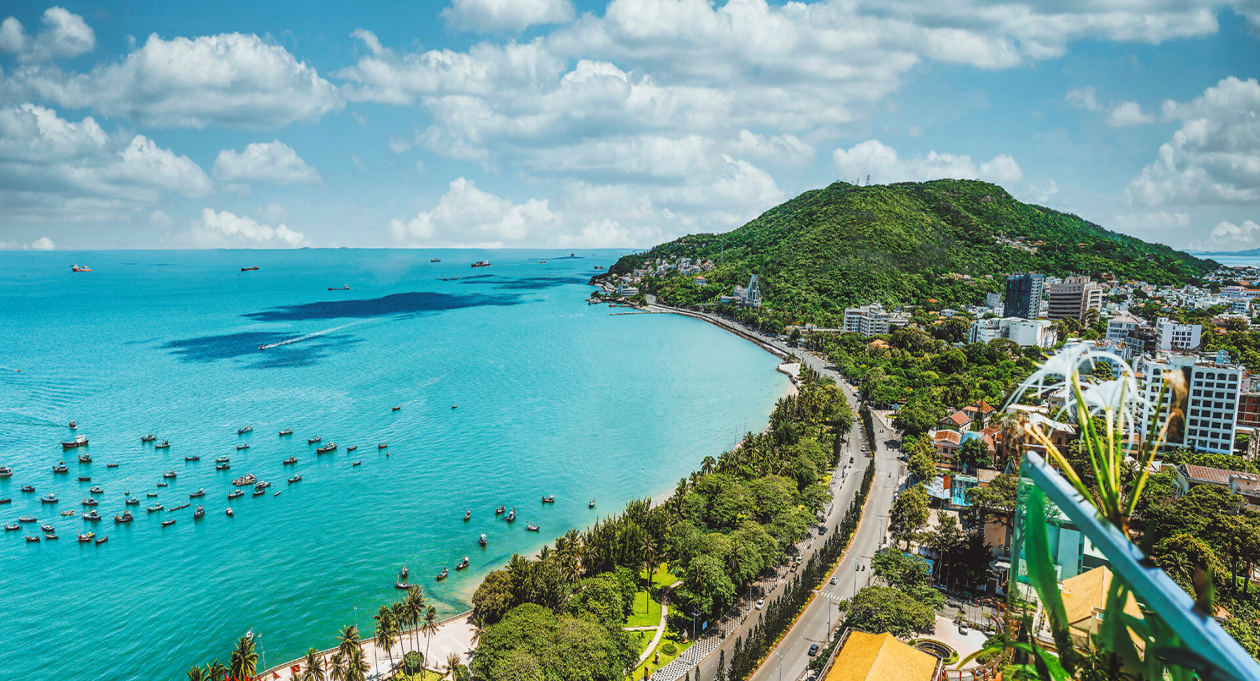Sure, you can get to Vung Tau via car, bike, bus or taxi; but why not shuck all convention and travel by hydrofoil from Ho Chi Minh City—it’s the most scenic route. The “Fast Ferry” takes about two-hours and travels up the Saigon River and into the bay before docking in Vung Tau.
Vung Tau is the port capital of the Ba Ria-Vung Tau Province. Located on a peninsula in Southern Vietnam. Vung Tau has history and all the bells and whistles befitting a trading port dating back to the 14th Century.
Vung Tau was once a hub for European trading ships which anchored in the calm waters for shelter (the name: Vung Tau translates into “Anchorage”). Yet, through up and down of the country, Vung Tau has maintained its charm and inviting seaside vibe. In fact, the cliffs of Vung Tau (Mui Nghinh Phong) translate into “Cape of Breeze Welcome.”
Back in the time, the French found Vung Tau an idyllic, if not elite, seaside getaway. With many French colonial mansions dotting the hillside haven.
Vung Tau has the festive, cheerful yet calming vibe for visitors to experience and explore.
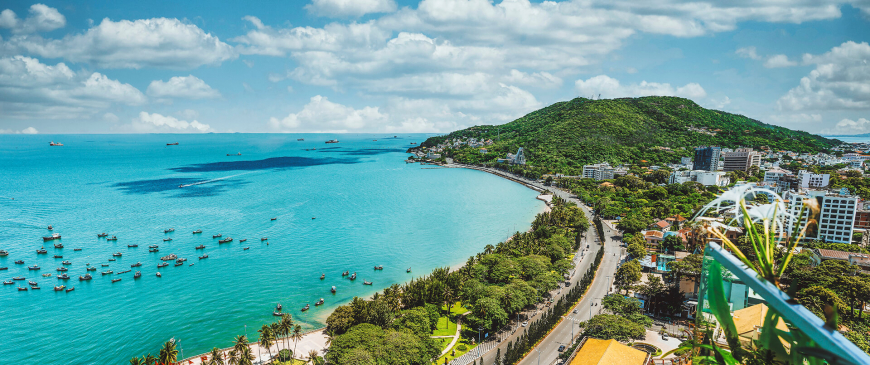
Vung Tau is a wonderful, mixed-bag. Besides its historical significance, there are beaches, myriad religious sites, hiking opportunities and downright bizarre entertainment venues. This is a port town and port towns tend to have a rollicking mix of old and new, of downhome and otherworldly. Here are a few examples:
There’s no doubt, Vietnam is known for its beaches and Vung Tau doesn’t disappoint (the most well-known being: Pineapple (Dua) beach, Vong Nguyet beach, Front beach (Bai Truoc) and Back beach (Bai Sau). But frankly, beaches aren’t the port’s main draw. Vung Tau is truly a sightseeing wonderland.
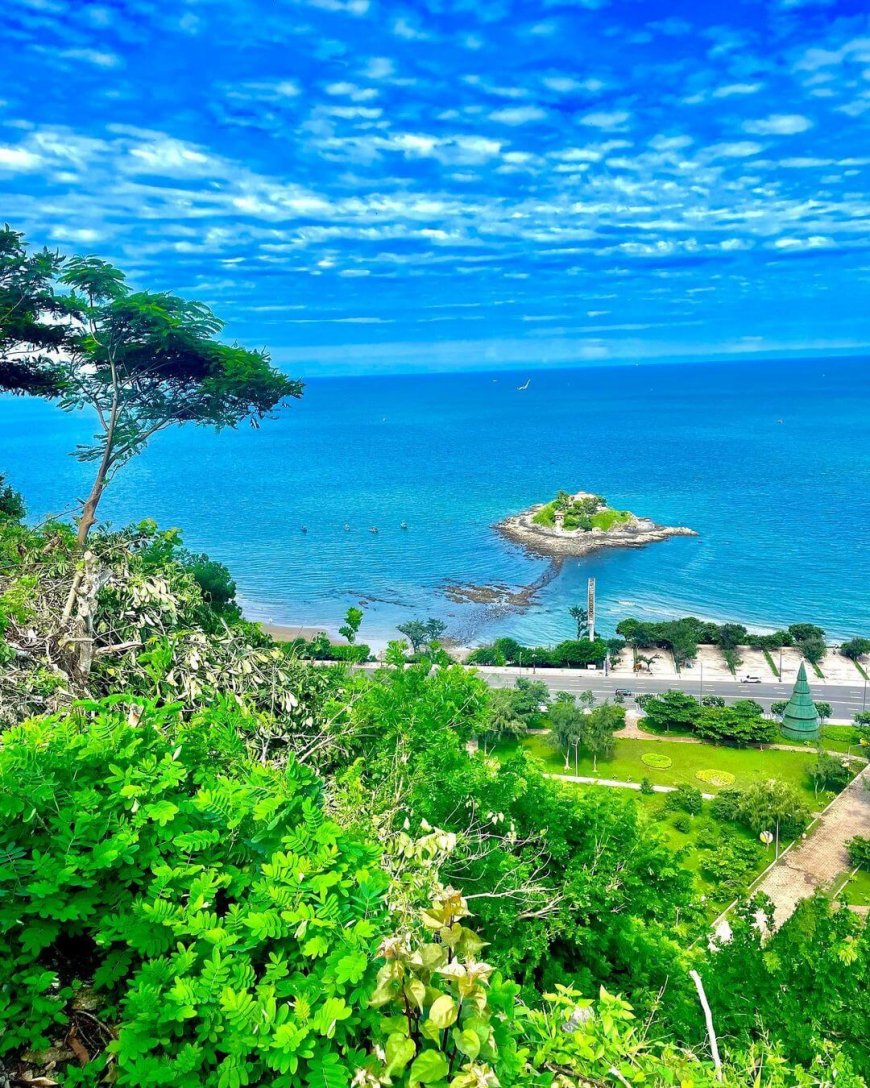
Source: Instagram - jonnguyen03
Of course, a bay means seafood and Vung Tau provides a bounty. Not only are their myriad restaurants to choose from (Vung Tau has some signature dishes: spicy string-ray, octopus hotpot and prawn pancakes, to name a few) but Vung Tau also plays host to the famous Tran Phu seafood market (right beside Sao Mai fisherman’s village). This seafood bazaar bustles daily with fishermen delivering their fresh catch each morning at dawn.
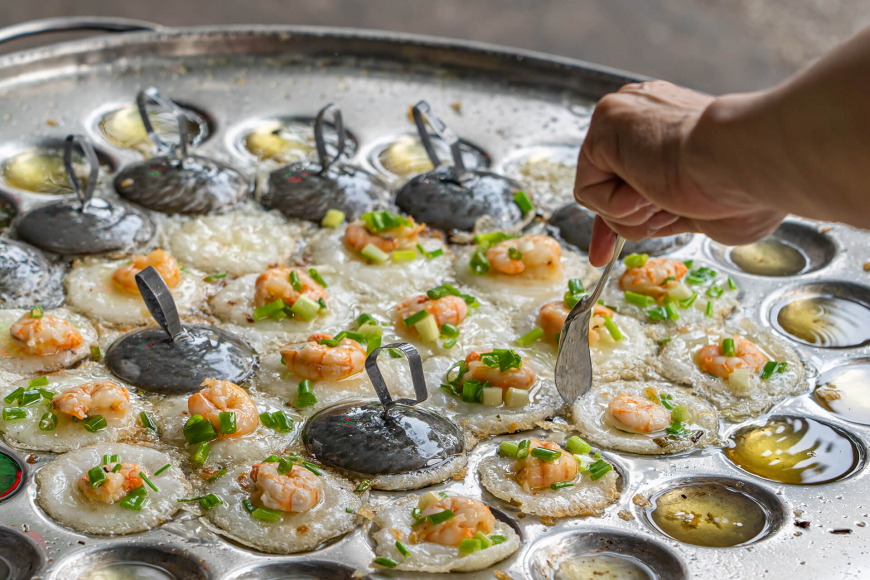
While Rio de Janeiro boasts the monumental, Christ the Redeemer statue, Vung Tau also has its own Christ the King statue. The 32-metre-tall statue is the tallest statue of Jesus Christ in Asia. Located on top of Nho Mountain, the views from the statue’s platforms are awe-inspiring but it takes a bit of devotion to get to them (an 800-step staircase to the base and another 133 to the highest platform).
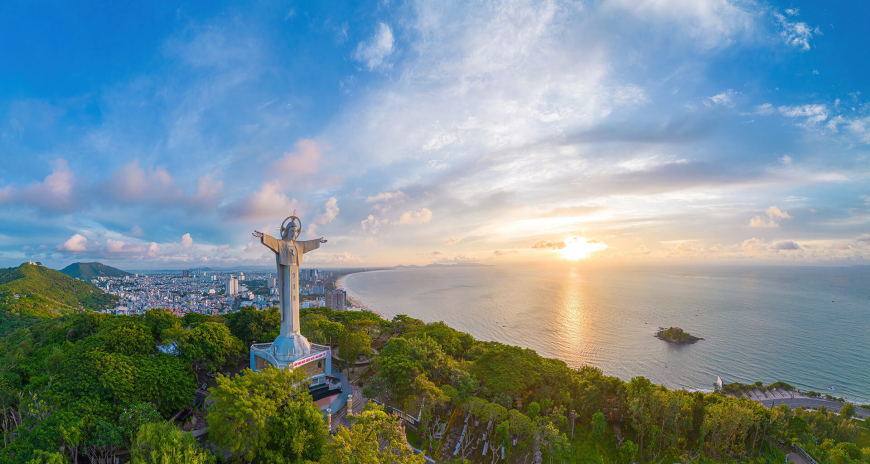
Keeping with the spiritual theme: Hon Ba is a tiny temple located on the tiny island of Hon Ba. It’s only accessible by boat or on foot during low tide, when you can navigate gingerly on a revealed tide-rock path. For a less perilous spiritual quest you can visit the Buddhist temple: Thich Ca Phat Dai. It’s an active temple, so you can mingle with the monks in the forested, hillside holy site, while marveling at the statues.
The Chon Khong Monastery is another blissful excursion for trekkers seeking enlightenment and great views. A giant Buddha statue welcomes you.
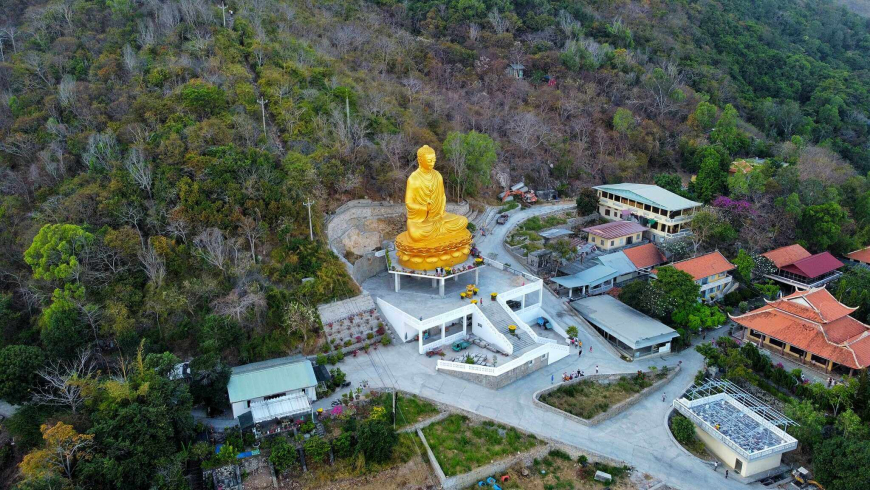
Source: Internet
Speaking of enlightenment, visitors can amble the winding road that leads to Vung Tau Lighthouse. The oldest lighthouse in all of Vietnam. This relic sentry was erected by the French in 1862. The 360-degree views are ideal for watching the sunset.
Aerial options also exist in Vung Tau. Visitors can take a sky-tram/cable car to Ho May Culture and Ecotourism Park, which also happens to include an amusement park—perfect for families or the kid inside us all.
Visitors are encouraged to visit the White Palace (Bach Dinh). Built in 1898, the White Palace was constructed as a summer villa with European-style architecture. Hellenic statues, gardens, period furniture. The views of the beaches and mountains are unapparelled.
For Military History buffs, Vung Tau serves up a direct hit—The Worldwide Arms Museum. Originally the private collection of a British arms aficionada, it is now Vietnam’s largest private arms museum. Here you’ll find several thousand tools of warfare. There’s everything from European medieval armor, to swords, guns and rifles—some dating back to 17th Century.
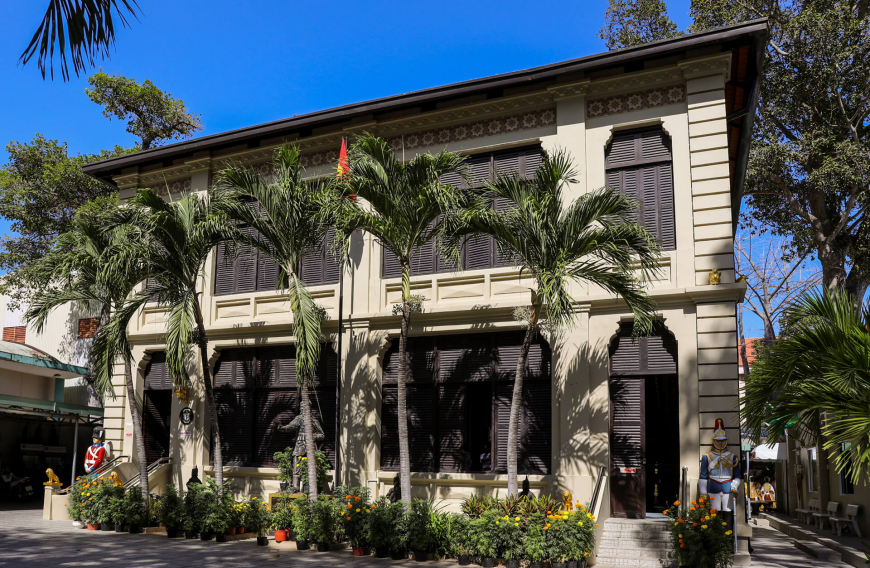
Source: Internet
In Vung Tau you can move from the beach, to aristocracy, to the absurd in a flash. You see, Vung Tau also provides a couple of seriously off-beat type attractions. Those being the Upside-Down House and Nha Seo Fi (the Selfie House).
The Upside-Down House is an interactive space designed to turn your world, well, upside down! Multiple floors of surrealism, painted topsy-turvy, with furniture affixed to the walls and ceiling—it’s a mind-blower and an epic photo-op.
Not to be outdone, there is also the Nha Seo Fi (Selfie House), a multi-level space with dozens of oddball virtual motifs, scenes and sets—ideal for selfies with a twilight zone twist.
Vung Tau is certainly a mishmash of cultural diversity, owning to its status as an historical international gateway to Vietnam. Vung Tau is a harbor town with beaches, culture, relic sites and flat-out fun.

